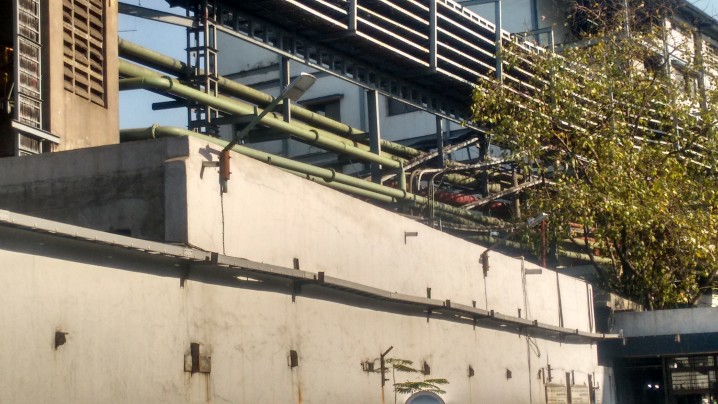FRP or Fibre Reinforced Polymer is composite material that is made of fibers reinforcing a polymer matrix. It is tough material that is used as a structural element in a number of areas — form electronics, railway coaches, aeroplanes, cars and a million other things around us. As a composite, FRP combines the best of two different elements, often getting bigger than the sum of two parts!
FRP is prized for its unique qualities — its strength, light weight, durability, ability to withstand most weather conditions and more. As result, it has emerged as a One of its biggest application lies in construction where FRP cable trays, pipes, sheets and rails are used in many ways. It is all around you in many forms, sometimes as the structure itself and sometimes as a critical component.
FRP applications in construction
FRP is found in all kind of structures — form our homes to high-rises, bridges and monuments. It is even found in prepossessed concrete where we need electromagnetic transparency and a high resistance to corrosion. Some of the applications of FRP in construction are:
In bridges: FRP composites are now used commonly in construction of bridges. They are used for the full structure or part of the structure. A very common combination that you can find here is of steel and FRP. Steel forms the primary structures and FRP is used for decks or FRP is used for wind shedding enclosures. In a number of marine locations, FRP is preferred over other structural materials because of its higher resistance to seawater degradation. It is perhaps the most durable material in marine constructions.
In building construction: FRP is a very commonly used sub‐component around all kind of housing — from villas to high rises and cottages. FRP is used for porches, dormers, chimney pots, bay windows, modular fittings, windows panels, sanitary ware, roofs, rain screens and cladding. It has replaced some of the most common construction materials. For instance, many tiled roofs are today made of FRP instead of the more traditional clay or mud. FRP cable trays are one of the most common elements — forming the backbone of the electrical framework of any building.
In repair and restorations: Can we use the modern powers of FRP in strengthening old constructions? Yes, we can. A number of engineering solutions are now focusing on using FRP to carry out repair and restoration work. We are not just talking of old buildings. FRP is also used in repairing old bridges that are falling into disrepair. FRP can be used to strengthen beams, girders, beams, decks and columns. It can be used to replace rusting pipes and for seismic strengthening.
Why is FRP used in construction?
Easy to install: FRP has excellent weight to strength ratio, which means that it is one of the strongest materials for its weight. The light weight of FRP naturally makes it easy for installations. This is especially true for overhead installations like FRP bridges, tanks and FRP cable trays. The ease of installation has a direct economic advantage. The lightweight material is easy to carry and hence, requires fewer tools or labor. This brings down the cost of installation considerably.
Fewer joints: Most of the FRP structures or components used in buildings are molded as per design. This means that there are fewer joints. The joints are where any structure experiences most wear and tear and starts to get weak. With a seamless structure, the FRP parts are less likely to develop these weaknesses and resultant cracks in the structure. This makes them stronger.
Resistance to corrosion: Among the top advantages of FRP, is its resistance to corrosion. It does not rust or peel away when exposed to weather conditions like sun and rain. Even in extreme weather conditions, FRP’s resistance to highly corrosive materials like seawater makes it one of the very few elements that we can use in marine installations. As a result, marine structure like towers, gangways, bridges and railings are often made of FRP.
Non-conductivity of electricity and fire resistance: In most buildings today, FRP cable trays are used to carry electrical wires and cables because of its non-conductivity and resistance to fire. It is considered the best material for the job — lightweight, safe and unlikely to catch fire.



